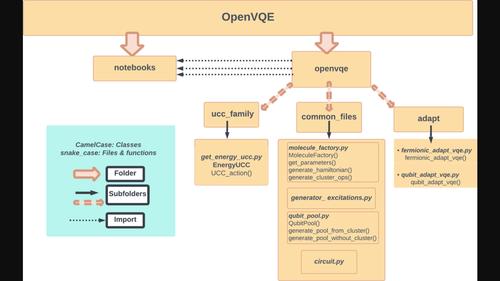当前位置:
X-MOL 学术
›
WIREs Comput. Mol. Sci.
›
论文详情
Our official English website, www.x-mol.net, welcomes your feedback! (Note: you will need to create a separate account there.)
Open source variational quantum eigensolver extension of the quantum learning machine for quantum chemistry
Wiley Interdisciplinary Reviews: Computational Molecular Science ( IF 11.4 ) Pub Date : 2023-03-15 , DOI: 10.1002/wcms.1664 Mohammad Haidar 1, 2, 3 , Marko J. Rančić 3 , Thomas Ayral 4 , Yvon Maday 2, 5 , Jean‐Philip Piquemal 1
Wiley Interdisciplinary Reviews: Computational Molecular Science ( IF 11.4 ) Pub Date : 2023-03-15 , DOI: 10.1002/wcms.1664 Mohammad Haidar 1, 2, 3 , Marko J. Rančić 3 , Thomas Ayral 4 , Yvon Maday 2, 5 , Jean‐Philip Piquemal 1
Affiliation

|
Quantum chemistry (QC) is one of the most promising applications of quantum computing. However, present quantum processing units (QPUs) are still subject to large errors. Therefore, noisy intermediate-scale quantum (NISQ) hardware is limited in terms of qubit counts/circuit depths. Variational quantum eigensolver (VQE) algorithms can potentially overcome such issues. Here, we introduce the OpenVQE open-source QC package. It provides tools for using and developing chemically-inspired adaptive methods derived from unitary coupled cluster (UCC). It facilitates the development and testing of VQE algorithms and is able to use the Atos Quantum Learning Machine (QLM), a general quantum programming framework enabling to write/optimize/simulate quantum computing programs. We present a specific, freely available QLM open-source module, myQLM-fermion. We review its key tools for facilitating QC computations (fermionic second quantization, fermion-spin transforms, etc.). OpenVQE largely extends the QLM's QC capabilities by providing: (i) the functions to generate the different types of excitations beyond the commonly used UCCSD ansatz; (ii) a new Python implementation of the “adaptive derivative assembled pseudo-Trotter method” (ADAPT-VQE). Interoperability with other major quantum programming frameworks is ensured thanks to the myQLM-interop package, which allows users to build their own code and easily execute it on existing QPUs. The combined OpenVQE/myQLM-fermion libraries facilitate the implementation, testing and development of variational quantum algorithms, while offering access to large molecules as the noiseless Schrödinger-style dense simulator can reach up to 41 qubits for any circuit. Extensive benchmarks are provided for molecules associated to qubit counts ranging from 4 to 24. We focus on reaching chemical accuracy, reducing the number of circuit gates and optimizing parameters and operators between “fixed-length” UCC and ADAPT-VQE ansätze.
中文翻译:

量子化学量子学习机的开源变分量子本征求解器扩展
量子化学(QC)是量子计算最有前途的应用之一。然而,目前的量子处理单元(QPU)仍然存在很大的误差。因此,噪声中等规模量子 (NISQ) 硬件在量子位计数/电路深度方面受到限制。变分量子本征求解器 (VQE) 算法有可能克服此类问题。在这里,我们介绍OpenVQE开源QC包。它提供了使用和开发源自酉耦合簇 (UCC) 的化学启发自适应方法的工具。它促进了 VQE 算法的开发和测试,并能够使用 Atos 量子学习机 (QLM),这是一种通用量子编程框架,能够编写/优化/模拟量子计算程序。我们提出了一个特定的、免费提供的 QLM 开源模块 myQLM-fermion。我们回顾了其促进 QC 计算的关键工具(费米子第二量化、费米子自旋变换等)。OpenVQE 通过提供以下功能很大程度上扩展了 QLM 的 QC 功能: (i) 生成超出常用 UCCSD ansatz 的不同类型激励的功能;(ii) “自适应导数组装伪 Trotter 方法”(ADAPT-VQE) 的新 Python 实现。myQLM-interop 包确保了与其他主要量子编程框架的互操作性,该包允许用户构建自己的代码并在现有 QPU 上轻松执行。组合的 OpenVQE/myQLM-fermion 库有助于变分量子算法的实施、测试和开发,同时提供对大分子的访问,因为无噪声薛定谔式密集模拟器可以为任何电路提供高达 41 个量子位。为与 4 到 24 的量子位计数相关的分子提供了广泛的基准。我们专注于达到化学精度、减少电路门的数量以及优化“固定长度”UCC 和 ADAPT-VQE ansätze 之间的参数和运算符。
更新日期:2023-03-15
中文翻译:

量子化学量子学习机的开源变分量子本征求解器扩展
量子化学(QC)是量子计算最有前途的应用之一。然而,目前的量子处理单元(QPU)仍然存在很大的误差。因此,噪声中等规模量子 (NISQ) 硬件在量子位计数/电路深度方面受到限制。变分量子本征求解器 (VQE) 算法有可能克服此类问题。在这里,我们介绍OpenVQE开源QC包。它提供了使用和开发源自酉耦合簇 (UCC) 的化学启发自适应方法的工具。它促进了 VQE 算法的开发和测试,并能够使用 Atos 量子学习机 (QLM),这是一种通用量子编程框架,能够编写/优化/模拟量子计算程序。我们提出了一个特定的、免费提供的 QLM 开源模块 myQLM-fermion。我们回顾了其促进 QC 计算的关键工具(费米子第二量化、费米子自旋变换等)。OpenVQE 通过提供以下功能很大程度上扩展了 QLM 的 QC 功能: (i) 生成超出常用 UCCSD ansatz 的不同类型激励的功能;(ii) “自适应导数组装伪 Trotter 方法”(ADAPT-VQE) 的新 Python 实现。myQLM-interop 包确保了与其他主要量子编程框架的互操作性,该包允许用户构建自己的代码并在现有 QPU 上轻松执行。组合的 OpenVQE/myQLM-fermion 库有助于变分量子算法的实施、测试和开发,同时提供对大分子的访问,因为无噪声薛定谔式密集模拟器可以为任何电路提供高达 41 个量子位。为与 4 到 24 的量子位计数相关的分子提供了广泛的基准。我们专注于达到化学精度、减少电路门的数量以及优化“固定长度”UCC 和 ADAPT-VQE ansätze 之间的参数和运算符。



























 京公网安备 11010802027423号
京公网安备 11010802027423号